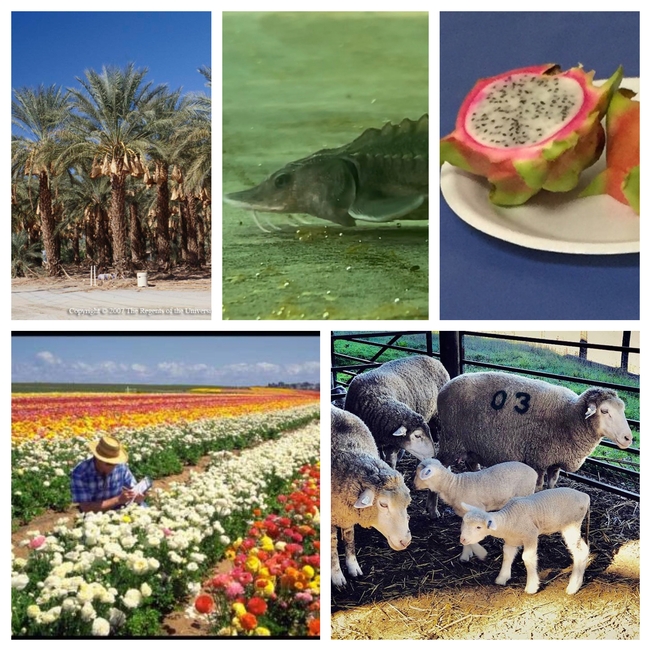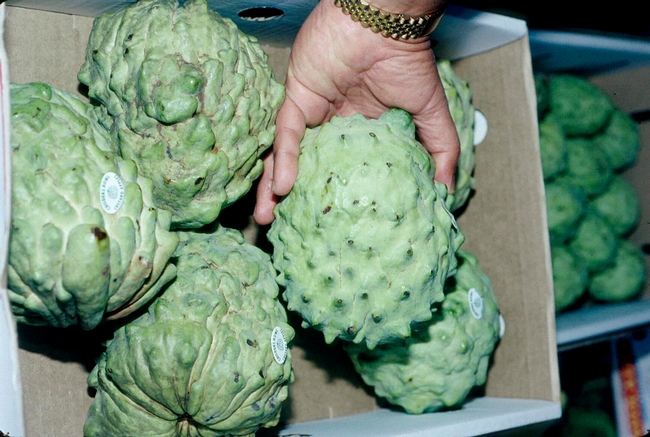More California farmers eligible for USDA Coronavirus Food Assistance Program funds
UC ANR experts available to comment
California farmers stand to benefit from the addition of more commodities now covered by the USDA Coronavirus Food Assistance Program, say UC Agriculture and Natural Resources experts. Yesterday (Aug. 11) the U.S. Department of Agriculture expanded eligibility and extended the deadline to apply to Sept 11.
Farmers of aquaculture, nursery crops and flowers, sheep and specialty crops such as dates, dragon fruit, nectarines, pomegranates, pumpkins and many other specialty crops grown in California are now eligible for financial assistance to help keep their operations afloat during the business disruption caused by the pandemic.
Below are UC Cooperative Extension advisors and specialists who are available for comment:
Daniel Macon, UC Cooperative Extension livestock and natural resources advisor serving Placer, Nevada, Sutter and Yuba counties, dmacon@ucanr.edu
“Including all sheep will be HUGE for California producers. Most California lambs are born in the fall and marketed in the late spring. The rest of the West has lambs born in the spring and marketed in the fall/winter/early spring. The original CFAP payments provided a maximum payout to lambs that would have been marketed earlier than most California lambs. And provided no payment for what we call running-age ewes (breeding animals).”
Jackson Gross, UC Cooperative Extension aquaculture specialist at UC Davis, jagross@ucdavis.edu
“This is a big distinction for our California freshwater fish producers. While it doesn't cover all of the diversity in California aquaculture, it does cover the majority of our industry as far as freshwater fish producers. A specialty crop distinction is important for our fish farmers, making them eligible for specialty crop funding and numerous other federal and state programs that were previously inaccessible.”
Cheryl Wilen, director of UC Cooperative Extension in San Diego County, cawilen@ucanr.edu
“It is my impression that ornamental nurseries will really have a good opportunity to recover money for unsold crops.”
Ruth Dahlquist-Willard, UC Cooperative Extension small farms and specialty crops farm advisor for Fresno and Tulare counties, rdwillard@ucanr.edu
"The addition of crops such as bok choy, daikon, winter melon, and turmeric expands the program to include more of the specialty produce grown on small-scale Southeast Asian farms in the Central Valley. However, highly diversified farms may find it difficult to apply for small acreages of multiple crops, and with USDA offices operating remotely, additional technical assistance is needed to support farmers with the application process."
Ramiro Lobo, UC Cooperative Extension small farms and agricultural economics advisor in San Diego County, relobo@ucanr.edu
“The specific mention of minor crops can be significant for small-scale growers in the state, and Southern California in particular for growers of crops like dragon fruit, and other minor subtropicals because it legitimizes them as commercial crops.”
Aparna Gazula, UC Cooperative Extension small farms and specialty crops farm advisor for Santa Clara, San Benito, and Santa Cruz counties, agazula@ucanr.edu
“It's great that the USDA Coronavirus Food Assistance Program has been expanded to include more minor crops. I hope the USDA offices have bilingual staff who can work with socially disadvantaged farmers with language barriers that often grow these crops.”
Aliasghar Montazar, UC Cooperative Extension irrigation and water management advisor in Imperial and Riverside counties, amontazar@ucanr.edu
“Maintaining date palms over the season is very labor oriented. During February to May, a lot of activities need to be conducted at a certain time. As you know, we had high pressure from the pandemic in the Coachella Valley during these months. It made labor less available, which created some challenges for growers.”
Mae Culumber, UC Cooperative Extension nut crop advisor in Fresno County, cmculumber@ucanr.edu
“Almonds, pistachios and walnuts commodities all suffered a price decline between mid-January and mid-April as a result of the COVID-19 pandemic. Thirty to 50 percent of the previous season's crop is normally marketed during this time of the year. The CFAP program will provide financial relief for losses due to price decline and spoiled shipments that lost a marketing channel due to the pandemic. Commodity boards are working with the Farm Service Agency to assist producers in applying for the program.”



What are some new viable crops to consider?
thanks
roger
Posted by Roger Boddaert on March 22, 2022 at 3:41 PM